Tile vs epoxy bathroom floor
Most people don’t even realize epoxy is a solid option for bathroom floors, and it beats tile in more ways than you might expect.
If you’re like most new homeowners, you probably walked into your first bathroom renovation thinking tile was the only real choice for floors. When someone mentioned epoxy, maybe you wondered: would that really work? Would it last? Is it sanitary? And how do the costs compare?
I get these questions all the time. My name’s Kelly Weaver, and after helping plenty of people redo their bathrooms, I’ve found that epoxy doesn’t just compete with tile; it beats it in a lot of ways. But, just like with every product, there are pros and cons to both options.
Let’s break down what you actually need to know before making your flooring decision.
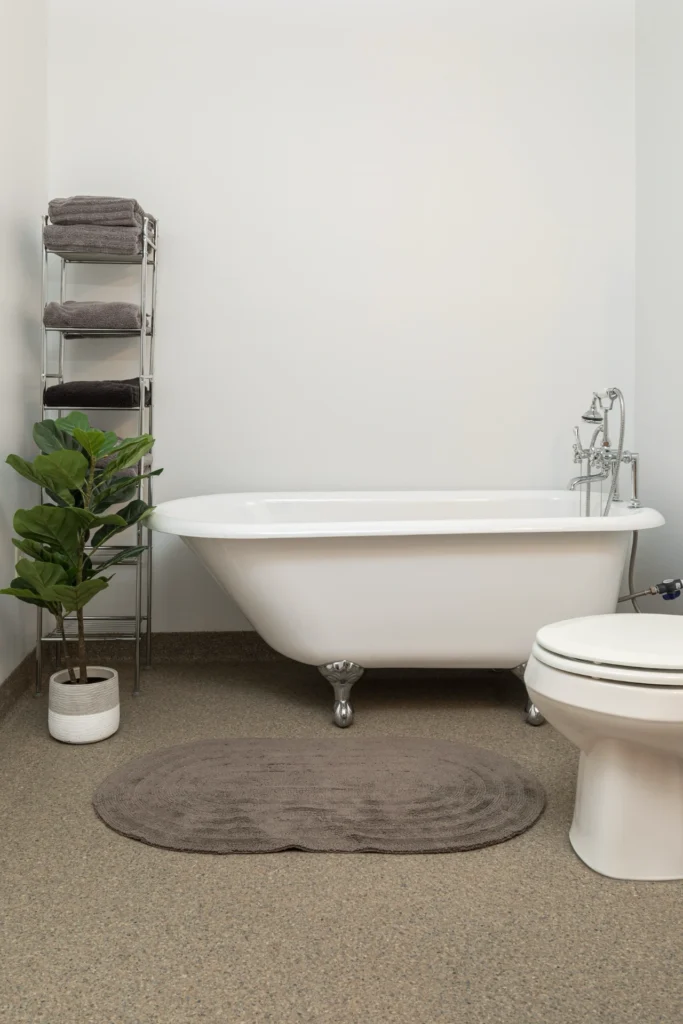
Why people replace their bathroom floors
Usually, it comes down to something pretty simple: your existing floor looks old, worn out, or obviously dated. Sometimes there’s damage, water issues, or just a style you never really liked.
Common bathroom floor options
When people call me, the first thing I do is recommend a free site visit and quote. That lets us see what’s going on and gives me a chance to show what’s really possible.
Most first-time homeowners think their choices are tile, linoleum, or vinyl plank. But epoxy is a contender you might not have even considered, and it can be installed over both concrete and wood subfloors.

Tile vs epoxy: which is better?
Honestly, “which is better?” is a matter of opinion and style. Here’s the quick breakdown:
- Choose tile if you want a classic look or something super specific. There are some tile visuals that just can’t be exactly duplicated with epoxy.
- Choose epoxy if you want a seamless, waterproof, and surprisingly warm floor that’s also much easier to keep clean.
Main differences most people don’t realize
The biggest difference? Cleanliness.
Epoxy is completely seamless and non-porous. Tile (no matter how beautiful) is always going to have grout lines, and those grout lines love to absorb dirt, water, and, let’s be real—other gross stuff. Dark grout isn’t there for looks; it’s there to hide the mess.
Epoxy just doesn’t have that problem. No tiny cracks for germs to live in.
When does tile make sense? When should you consider epoxy?
If you’re after a very specific, traditional tile look, tile might be for you.
But for everything else—water resistance, warmth underfoot, and lack of maintenance—it’s hard to beat epoxy. You don’t have to deal with water getting under vinyl planks or dirt collecting in grout. When an epoxy floor shows wear years down the line, you can refinish it with a new clear coat or even change the color without ripping everything up.
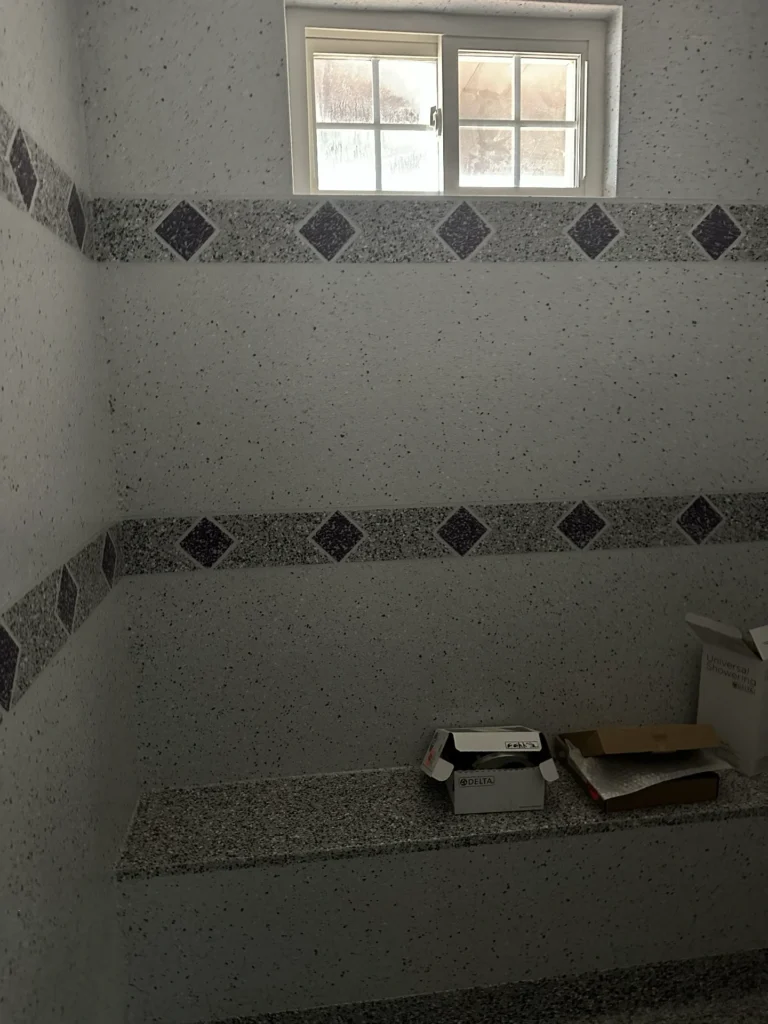
How do costs compare?
I checked in with a local tile company just to be sure. It turns out the upfront cost for epoxy vs. tile in bathrooms is actually very similar. Bathroom spaces are small, so you’re usually looking at project pricing, not by the square foot.
Maintenance over time
- Tile (ceramic or porcelain): Mostly you’re fighting to keep the grout lines clean. If you opt for natural stone, you’ll need to seal it every year or two.
- Epoxy: No routine maintenance, just keep it clean. The topcoat can last 15–20 years in a low-traffic room like a bathroom you might see more wear in a kitchen or dining space, but bathrooms are easy on flooring.
If you ever notice it’s harder to clean, or you see visible scuffs, that’s your sign to refresh the topcoat—a simple process compared to tearing out tile.
Durability & lifespan
Both tile and epoxy can last decades if installed properly, but moisture is a huge issue with tile. If water gets under tile due to poor installation or grout breakdown, you can end up with loose tiles or even mold.
Epoxy floors, when done right, are completely waterproof from the top. If you’re raising kids who love to splash or just want a floor that isn’t phased by puddles, epoxy’s hard to beat. And if you ever do damage the floor—a big drop, a heavy object—it’s usually quick and easy to fix.
Regarding durability, epoxy is softer than ceramic tile, making it more susceptible to scratches, while ceramic tile’s harder surface resists scratching. However, in a residential bathroom where the floor is gently used, scratching is less common—unlike in high-traffic areas like entryways or under kitchen chairs.
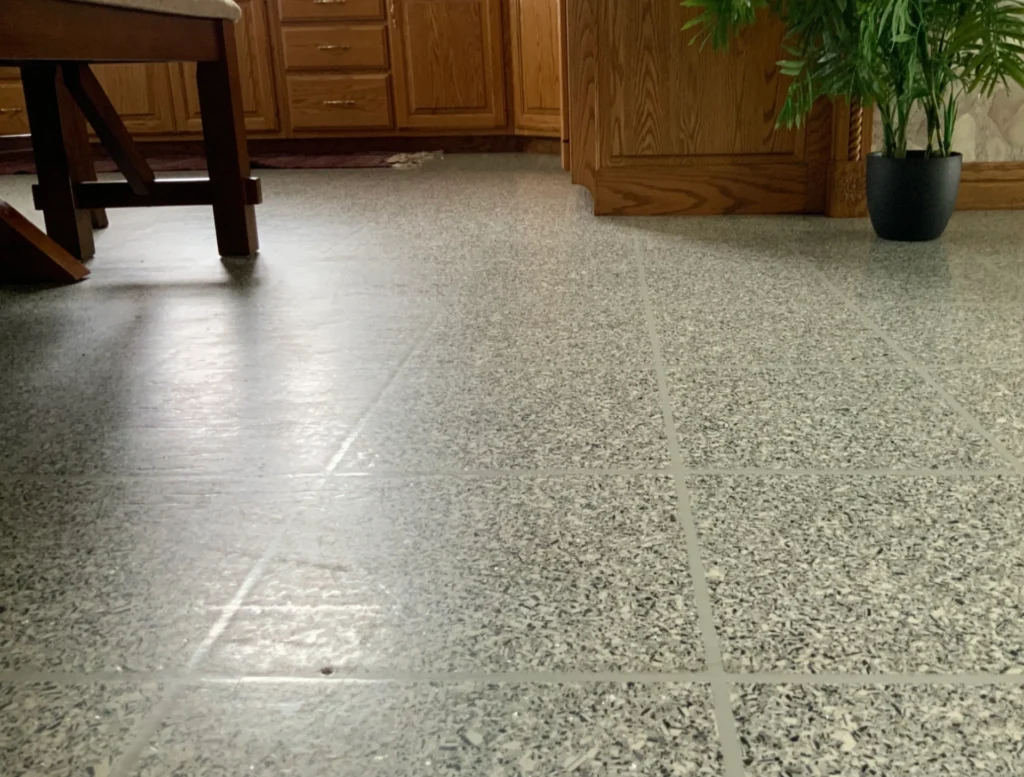
Dealing with spills, chemicals, and dropped objects
- Water spills? Epoxy’s made for it.
- Cleaning chemicals? Most household cleaners are fine—just double check with your installer if you’re cleaning with something out of the ordinary. They can tailor the topcoat for extra chemical resistance in unusual settings.
- Dropped objects? Both tile and epoxy can chip or crack if you drop something heavy or sharp, like a heavy tool or the point of a knife. The difference is, repairing epoxy is often a lot faster and easier than replacing a broken tile.
Mold, mildew, and sanitation
Tile’s weak spot is always going to be grout. Grout lines are perfect for mold and mildew, especially in an area that’s always wet. With epoxy, you just don’t have a place for mold to hide. If anything does grow, it’s right on top and can be wiped away.
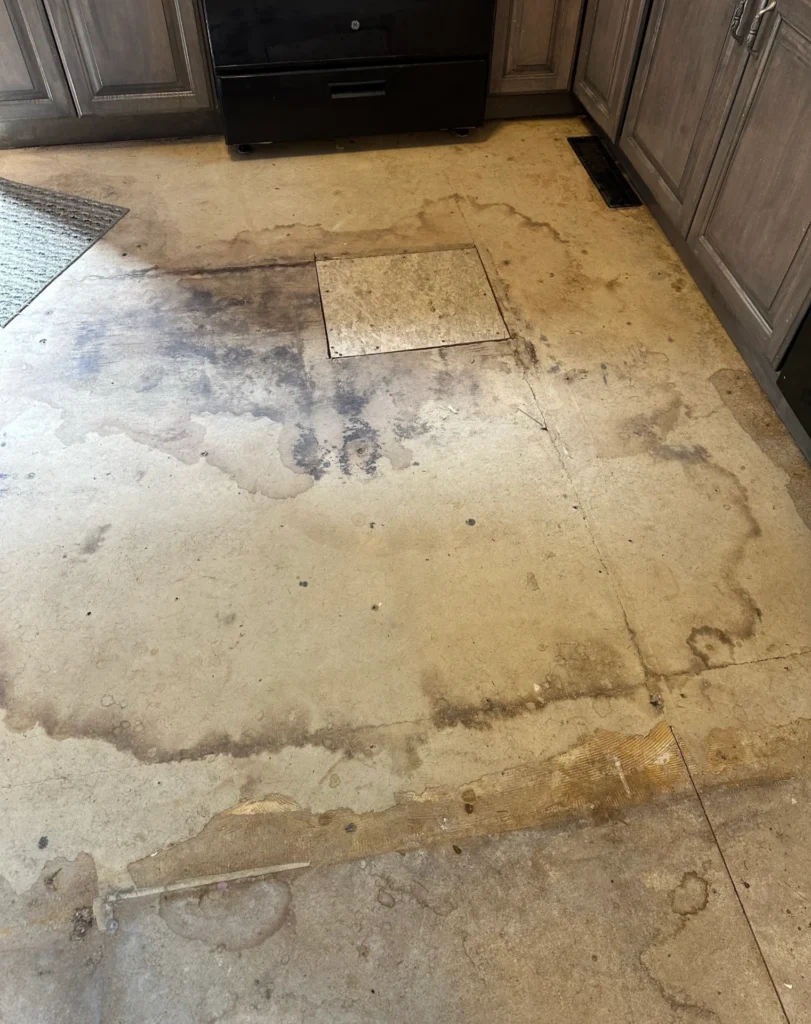
Feel, comfort, and slipperiness
- Warmth: Tile floors tend to feel cold—unless you go for in-floor heating. Epoxy on wood will be room temperature; on concrete, it’s as warm (or cool) as the slab underneath.
- Softness: Tile is hard. Epoxy actually has a touch of “give” and feels softer underfoot.
- Slipperiness: Both can get slick when wet. If you’re worried, you can ask for a gritty texture with epoxy to add grip, but most people skip it in bathrooms so cleaning stays easy. I always recommend a rug outside the shower either way.
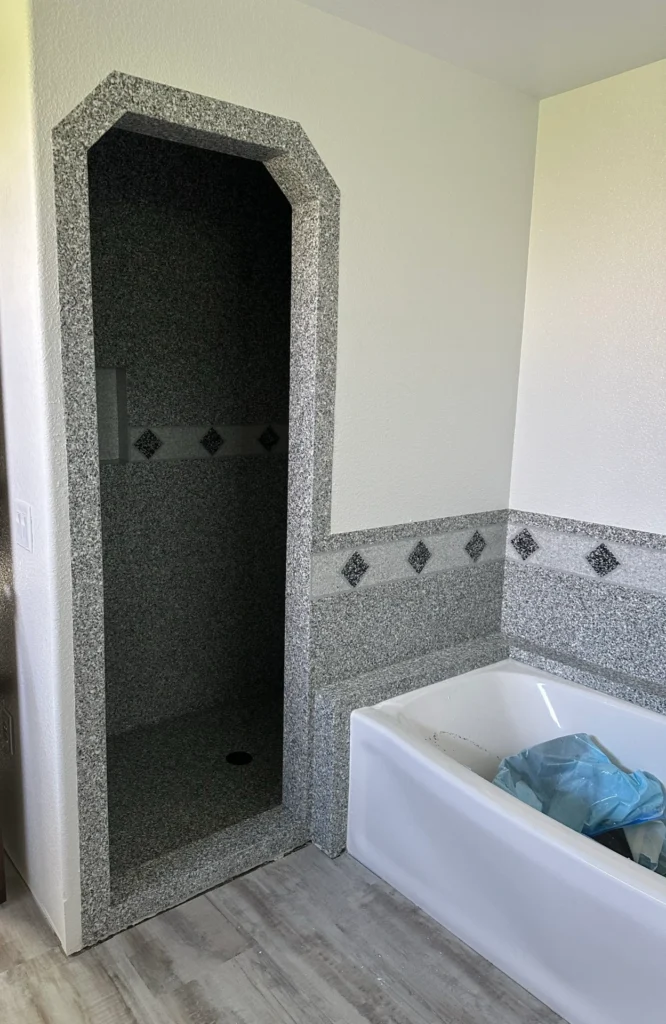
Installation timeline & disruption
Epoxy is usually installed one layer per day—so for a decorative floor, you’re looking at three to six days. There are some fast-curing options if you need to hurry things along.
For both tile and epoxy, a little prep work is needed. For epoxy, you or your installer will:
- Remove the toilet and baseboards
- Sometimes remove existing flooring (we can do that if needed)
- If you’re working over wood, you’ll need a layer of lauan (a thin underlayment) to keep things stable over time
New construction vs. old homes
Epoxy floors work just as well in new and old houses, though older homes mean a bit more prep (removing old floors, baseboards, etc.). Good news: you can even install epoxy directly over existing sound tile in some cases, avoiding a big, messy demo.
Style & design options
When most people think epoxy, their mind jumps to garage floors with big flakes. Forget that. Bathroom epoxy can mimic tile (even with “fake” grout lines), look like polished concrete, or even take on gorgeous marble effects with metallic pigment blends. Colors and styles are nearly unlimited.
Tiles still have more three-dimensional feel and texture, but for color and creativity, epoxy gives you loads of options—and one-of-a-kind looks.

Combining tile and epoxy
Can you mix and match? Absolutely. Some people install tile in their shower and epoxy on the bathroom floor, or vice versa. Just keep in mind, if you’re already redoing the floors, it often makes sense on budget and timeline to stick with one installer.
What makes for a high quality epoxy install?
Not all epoxy companies are the same—there are a lot of shortcuts out there that can cause problems later.
A good install includes:
- Excellent concrete prep (I recommend shot blasting if possible)
- A high-quality primer (especially for moisture issues in concrete)
- At least three coats of commercial-grade epoxy and finish layers
- Installers with experience; I’d look for a team that’s been in business at least five years—ten is even better
Some “one day” companies skip critical steps like the primer to save time or cost. The result? Lower durability and a floor that may not last as long as you hope.
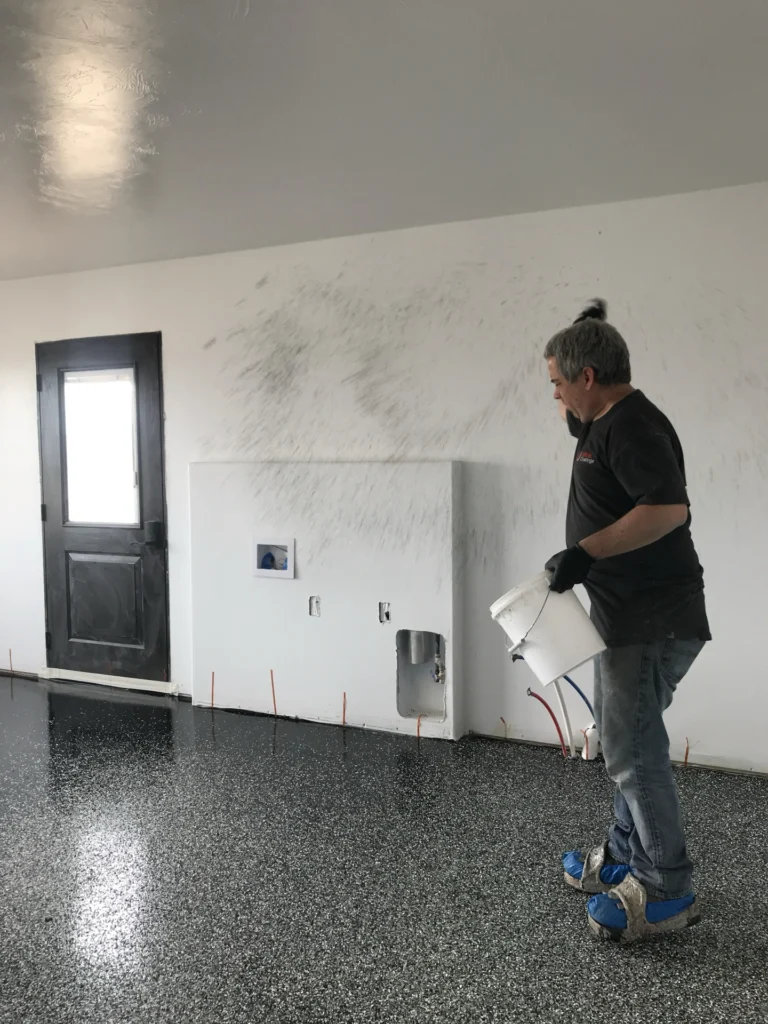
Common myths
Biggest myth I hear: Epoxy is a DIY project. Honestly, it’s not. Products labeled for home use are not the same as commercial-grade, and you have a tight window to work before the material starts to cure. The margin for error is slim, and getting a professional to fix a DIY mess costs more money in the long run.
Real-life regrets
I had a friend who put in a tile floor and almost right away the grout started crumbling and tiles came loose. She got fed up, ripped it out, and switched to epoxy. She loves it—and it’s been zero trouble since.
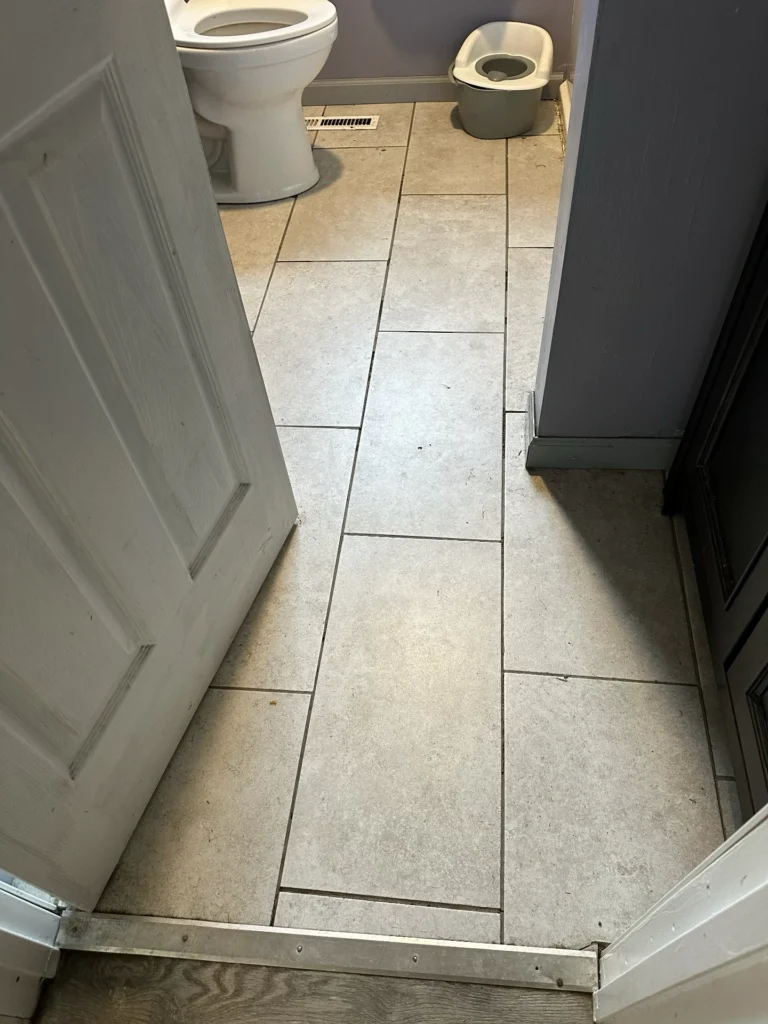
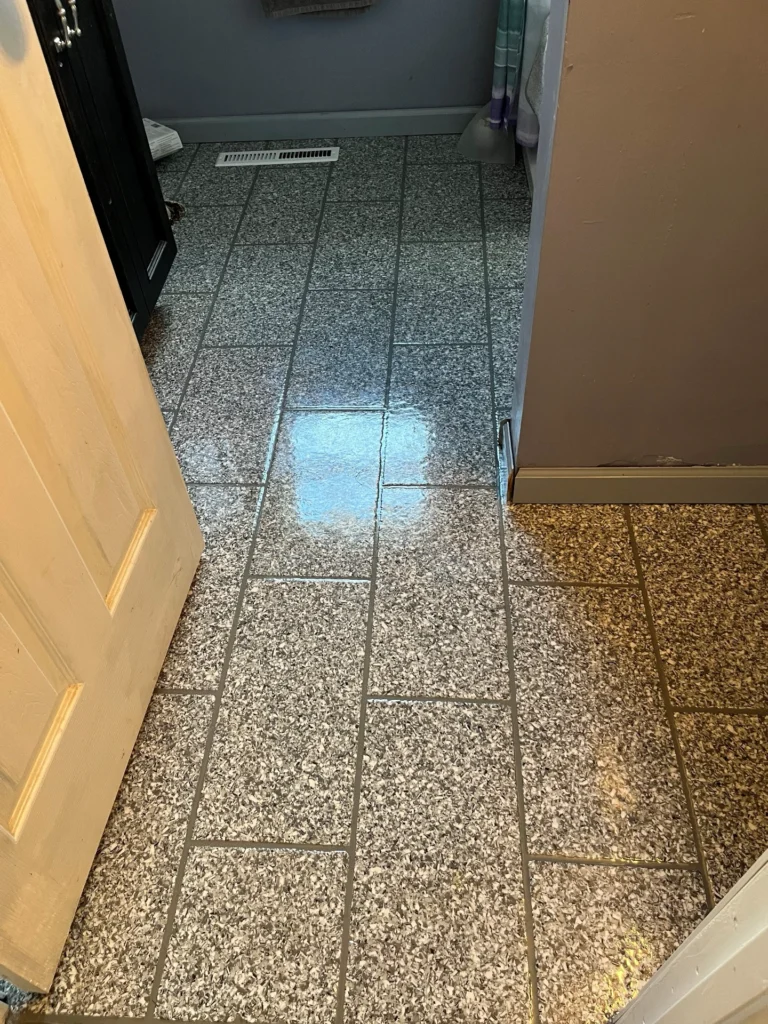
How to get started with epoxy
Thinking about epoxy for your bathroom? Start by contacting a local, experienced installer and see what they offer.
And before you commit, ask these questions:
- How long have you been installing epoxy floors?
- What prep methods and primers do you use?
- How many coats do you apply?
- What kind of topcoats do you recommend for bathroom environments?
You want an installer who knows the little details—they make a huge difference in how your floor looks, feels, and lasts.
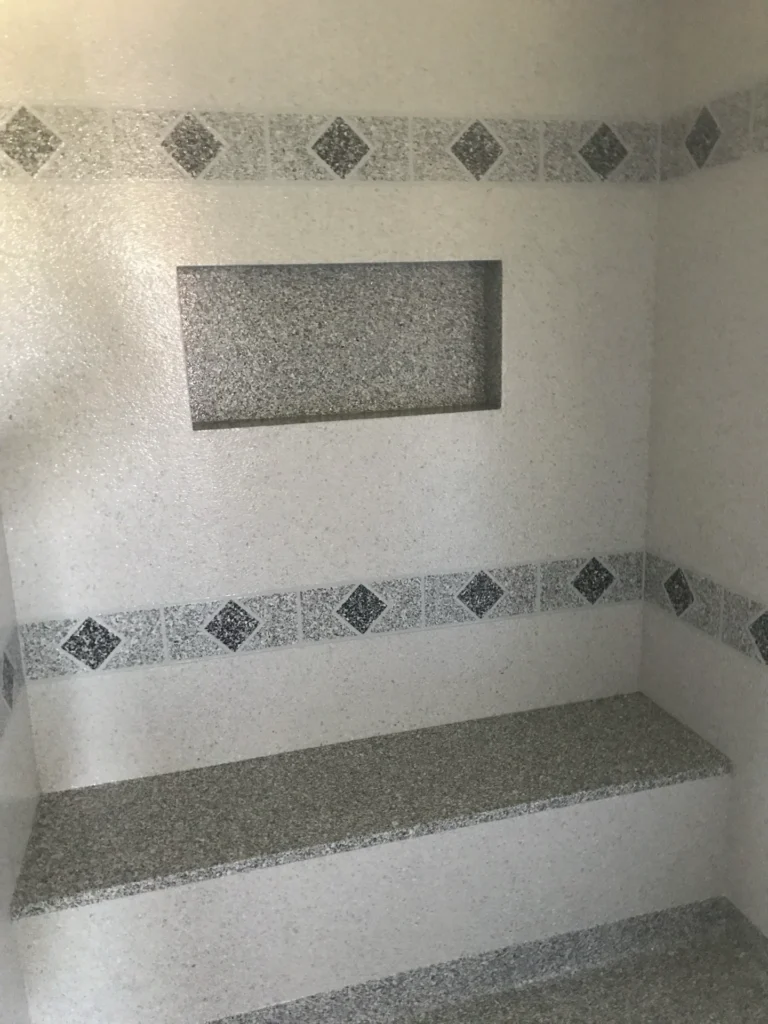
In closing
Don’t fall for shortcuts or try the DIY route with epoxy. What saves you a few bucks on day one may cost you double or triple in repairs later. Always choose installers who prep well, use commercial-grade products, and take time to discuss your needs before they start.